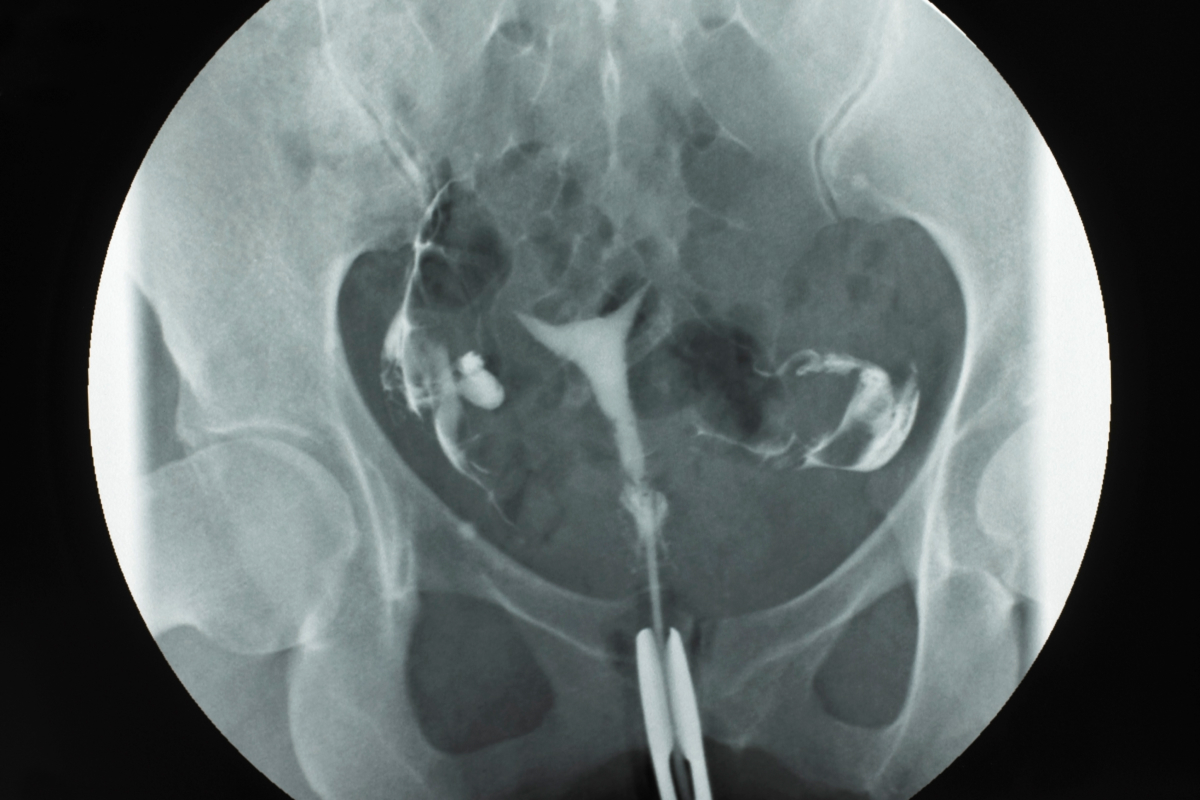Visit us in San Francisco
Academic standards. Pioneering research. Personalized care. Start your journey at the UCSF Center for Reproductive Health, located in Northern California's San Francisco Bay Area.
A hysterosalpingogram (HSG) is a low-dose X-ray used to visualize the fallopian tubes and uterus, and is part of a standard fertility workup prior to IUI treatment. At UCSF CRH, HSGs are performed by our Radiology Department. HSGs are ordered if needed by our providers only after your initial consultation.
During the procedure, a small amount of contrast “dye” is instilled into the uterus and images are taken as the dye flows through the uterus and fallopian tubes. Your doctor will use this information to determine if the fallopian tubes are open.

Please abstain from intercourse from Cycle Day 1 until your HSG exam. You will be asked to provide a urine sample for a pregnancy test when you arrive to the Radiology Department, prior to the HSG procedure. If you are allergic to contrast dye, please call the Radiology Department to inform them.
Most patients experience moderate cramping during the HSG procedure. To ease any discomfort, we will prescribe a pain medication called Toradol (ketorolac) for you to take 30 minutes prior to your appointment. Toradol is not a narcotic and has minimal side effects; you are able to drive yourself to and from the HSG procedure.
An HSG starts like a typical gynecologic exam, with placement of a speculum to visualize the cervix. A thin catheter is placed through the cervix and is used to instill the contrast dye into the uterus. This typically causes the most cramping but only takes several minutes. The radiology staff performing the HSG will take X-ray pictures of your pelvis as the dye is injected. Once the procedure is complete, they will remove the catheter and speculum.
If you are having your HSG done at UCSF, the result and images will be available to your doctor to review. If there are any abnormalities, your doctor will contact you to discuss these further.
You may have cramping, bloating and spotting or light bleeding after the HSG procedure, which can last for up to 24 hours. You can resume your normal activities without limitations. Please contact your Care Team right away if you experience severe abdominal pain, fever >100° F, or heavy vaginal bleeding after the HSG procedure.
Academic standards. Pioneering research. Personalized care. Start your journey at the UCSF Center for Reproductive Health, located in Northern California's San Francisco Bay Area.